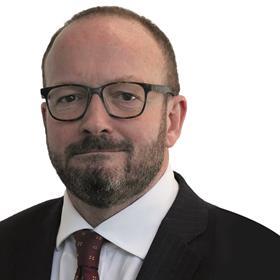Berkeley Group founder Tony Pidgley was, along with Sir Lawrie Barratt, one of the two giants of modern housebuilding – an industry they both, in differing ways, were largely responsible for fashioning.

Pidgley, who built Berkeley from a single home in 1976 to a FTSE 100 stalwart, literally ‘died with his boots on’, after presenting a creditable set of annual results only nine days earlier.
Breaking the news in a Stock Exchange release, his CEO and protégé Rob Perrins wrote “he knew he would never retire so ensured that his culture was embedded in the company”.
Pidgley turned the London-centred developer into arguably the defining housebuilder of the past three decades or so, just as Sir Lawrie did nationally at Barratt in the preceding three.
He was the classic larger-than-life self-made man, by turns innovative, street wise, very funny and at times utterly ruthless.
His sense of timing has, of course become the stuff of legends. He is widely reported to have sold land in London just before the market cratered in the late 1980s. I’m told there’s more to that story than meets the eye: after being outbid when trying to buy sites, he decided if you can’t join them, sell to them.
Perrins displayed similar homespun nous in the frenzied conditions in the middle of the past decade, telling me words to the effect of “you know the land market’s gone mad when you’re number 20 out of 20 bidders … and you don’t recognise the 19 above you”.

The fruits of Berkeley keeping their heads while others in the land market were losing their shirts were evident in Pidgley’s last results: an eye-watering £1.1bn of net cash and total £1.9bn in financial fire power.
Berkeley’s breadth of time scale also marks it out. Some of its largest regeneration projects, often in deeply unloved corners of London, such as Woolwich or Kidbrooke, took decades to steer through planning and development.
It is a classic case of ‘patient capital’, only feasible through a financial model more flexible than that of national housebuilders, where any shortfalls from three-year earnings projections invariably meet with collapsing share prices and short managerial tenures.
He is also said to have been a master of playing the waiting game in individual land purchases, with vendors eventually caving in to Berkeley’s terms.
Having started building ‘executive homes’ in the leafy hinterland of London, Berkeley turned decisively urban, often taking on huge and complex sites, encompassing affordable housing and penthouses, that can take decades to complete. Corporate innovations include joint ventures with utility groups Thames Water and National Grid and developing what is likely to be one of the world’s most modern ‘modular’ housing factories, in Kent.
He could be hilarious, often with Perrins playing the ‘straight man’. Presenting to his blue-blooded investment bankers, one UBS director intoned “what is your WACC [weighted average cost of capital], Mr Pidgley?” “What’s my whack?” he responded, slapping his wallet on the table. “That’s my whack!”
Exacting standards
But woe betide anyone who crossed him, including recalcitrant buyers trying to wriggle out of completing purchases, or senior staff that didn’t match his exacting standards – there is a long list of former Berkeley directors. However, Perrins stayed the course. He joined Berkeley 20 years ago as finance director and is credited in 2004 with devising the series of capital returns that have since become commonplace among rivals.
The first programme was deferred in 2008, prior to Berkeley buying swathes of land from struggling owners after the financial crisis, on which it is still delivering super-normal margins. Intriguingly, the latest phase was deferred by up to two years to invest in land “should opportunities arise”. I’m sure they will.
Often combative with politicians and administrators, Pidgley started developing in Birmingham a few years ago – a likely pointer to the second city’s potential.
But Pidgley’s enduring legacy will be his part in transforming London. His timing in founding Berkeley was characteristically immaculate, five years before the capital’s population bottomed out at 6.7 million after three decades of depopulation. It is now 9.3 million and Berkeley has been at the forefront of changing the skyline.
The transformation of the Ferrier Estate into Kidbrooke Village is a masterpiece of visionary planning. Tony Pidgley was many things; I don’t think it’s an exaggeration to call him ‘The man who built London’.
Alastair Stewart is an equities analyst and consultant






























No comments yet